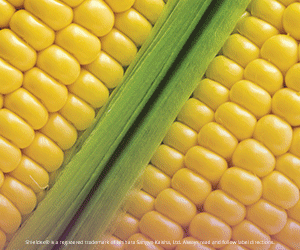Trait approval process
THE LONG ROAD TO REGISTER NEW VARIETIES ENSURE AUTHENTICATED CLAIMS AND SAFETY FOR ALL
everyone directly or indirectly involved in grain farming knows that it’s a long process to create and release new crop varieties with improved traits developed through biotechnology. However, it is also a process which is evolving to address new techniques, as well as the current needs of farmers.
developing the trait
The process of releasing a new trait to market begins with the “discovery” phase. Over two, three or four years, tens of thousands of gene candidates are screened in plants grown in growth chambers or greenhouses to find those that are potentially promising. When a smaller number of candidates have been identified, the second phase of the process begins. It involves another two years of further screening to demonstrate plant performance in a field setting. “At Monsanto, this is known as the ‘proof of concept’ stage,” notes Brian Treacy, Canada Regulatory Lead at Monsanto Canada Inc.
The following development phase, like conventional breeding practices, focuses on the selection of top performers and the elimination of outliers. This third phase generally involves two additional years of field testing including the generation of regulatory data. Information from field studies is gathered to show that the new crop variety is safe for animal feed, human food consumption and release into the environment.
The regulatory authorities, (including the Plant Biosafety Office of the Canadian Food Inspection Agency (CFIA-PBO)), conduct a comprehensive environmental risk assessment of the candidate product, based on extensive testing in accordance with international guidelines. The CFIA’s Animal Feed Division assesses novel livestock feeds while Health Canada assesses novel foods. These assessments must conclude that the candidate product is as safe as conventional varieties of the same crop. “Registrants are required to submit a dossier of studies for review to all three regulatory authorities,” says Treacy. “Data generation on safety typically requires a minimum of two years and begins only after the candidate product has met commercial performance standards as assessed in multiple environments during the prior two years or more.”
testing for safety
The CFIA-PBO assesses the environmental safety of plants with novel traits (PNTs) based on five criteria, says CFIA spokesperson Daniel Keppie. These are: the potential of the PNT to become a weed or to invade natural habitats, the potential for genes to mix with wild relatives whose hybrid offspring may become more weedy or more invasive, the potential for the PNT to become a plant pest, the potential impact of the PNT or its gene products on non-target species (including humans), and potential impact on biodiversity.
In terms of specifics, Keppie says developers must provide information on the identity and origin of the PNT, the properties of the novel gene and gene products, the relative phenotypic expression of the PNT compared to a similar counterpart (where differences are anticipated), and the anticipated or known effects on the environment caused by the release of a PNT.
Regulatory submissions are also prepared for other production countries where the company would like to cultivate the product, as well as for main potential export market countries. However, Treacy says some exceptions exist. “For example, China only allows submission of regulatory data after the regulatory process is complete in the country where the PNT was produced,” he notes.
process evolving
Treacy notes that the regulatory approval process for new varieties is continuously evolving – mostly with the aim of keeping up with new scientific advancements – but that it’s also becoming more collaborative in order to enable companies to be competitive in multiple markets. “Over the last few years, multilateral joint reviews and work-sharing arrangements have been explored in order to optimize the timing of approvals between trading partner countries and minimize trade irritants,” he observes. “One example is the recent trilateral review for drought corn that occurred among Canada, US and Mexico.” In addition, the CFIA and Health Canada are assessing ways to possibly streamline the regulatory process further for products that are familiar. “This helps regulators manage their growing workloads and potentially accelerates the delivery of innovations to farmers,” Treacy notes.
WHAT ARE “PLANTS WITH NOVEL TRAITS”
According to the Canadian Food Inspection Agency (CFIA) a plant with a novel trait (PNT) “is a plant that contains a trait which is both new to the Canadian environment and has the potential to affect the specific use and safety of the plant with respect to the environment and human health. These traits can be introduced using biotechnology, mutagenesis, or conventional breeding techniques.”
Canada is unique as it regulates the product (the plant with a novel trait) and not the process used to develop the product (biotechnology).
According to the CFIA, to date, all genetically engineered plants have been considered to contain novel traits. But not all PNTs are developed through genetic engineering. “Canadian scientists and other stakeholders recognized that the potential for risk lies with the new trait and not with the process by which the trait was introduced,” says a CFIA factsheet.
When comparing Canada to many other world areas, we benefit here from a predictable science-based regulatory system that supports innovation,” says Brian Treacy, Canada Regulatory Lead at Monsanto Canada Inc.
Canada’s “novelty” approach makes our regulatory system very broad in scope. No other country uses such a broach approach. •







